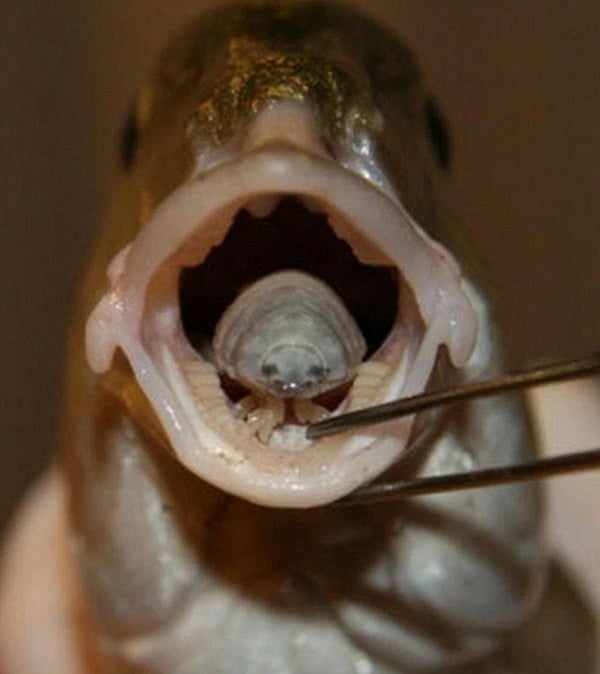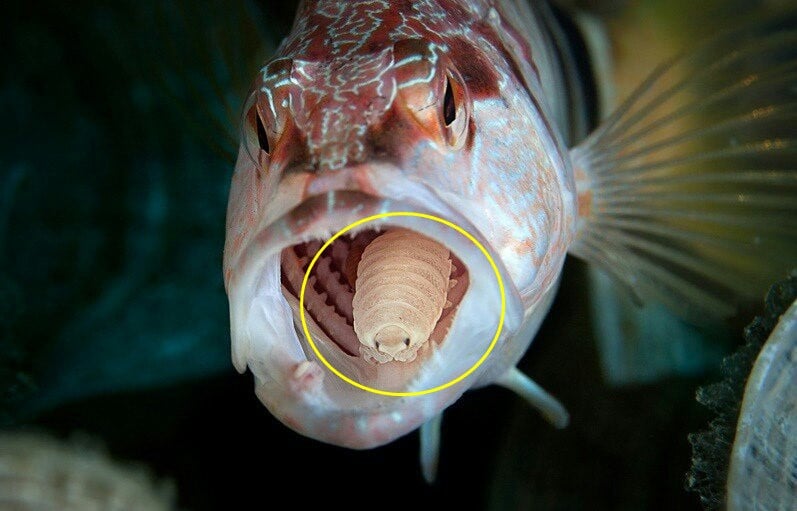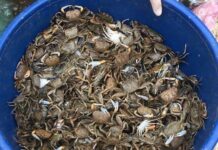A Terrifying Tale from the Depths of the Ocean
In warmer waters such as the Gulf of California, Ecuador, and the Atlantic Ocean, a tiny yet terrifying creature has been identified: Cymothoa exigua, commonly known as the “tongue-eating louse.”
This isotropic species of parasitic marine life invades the gills of its fish host as a larva, where it develops into a male. When there are two individuals in the same host, one will change gender to female, and this is when the horror story begins.
The female crawls into the fish’s mouth and attaches herself to the base of the tongue. With hook-like limbs, she pierces the blood vessels, causing the organ to atrophy and eventually fall off. Interestingly, instead of killing the host as typical parasites do, the “tongue-eating louse” replaces the tongue and functions as a pseudo-tongue.

A Lifetime of Parasitism, but Not at the Cost of the Host’s Life
It might seem like a tragedy for the fish, but surprisingly, they survive and continue to grow normally—only with a completely new “tongue.” The louse remains attached to the mouth, feeding on blood and mucus. This is the only known case in the animal kingdom where a parasite not only lives off the host but also entirely replaces one of its organs.
Research suggests that fish can live stably for several years with this “pseudo-tongue.” However, the presence of two or more parasites simultaneously will weaken the fish, making it appear frail and emaciated.

The Fascinating Gender Flexibility of the Tongue-Eating Louse
Equally intriguing is the parasite’s ability to change gender. They start life as males, but when it’s time to reproduce, one individual transforms into a female and takes up residence in the fish’s mouth. From there, she mates with the males living in the gills, ensuring the continuation of their life cycle.
Marine biology expert Dr. Elena Morgan from the University of California comments, “Cymothoa exigua is an extremely rare and fascinating example of parasitic adaptive evolution. While it may be frightening, it showcases the intricate and subtle nature of nature.”

Is It Harmful to Humans?
The good news is that this particular louse is not toxic or disease-carrying for humans. However, discovering them in fish during food preparation or consumption can be quite a shock. There have been lawsuits against restaurants for serving fish with this parasite, but courts have dismissed the cases as the louse does not pose a health risk.
Nevertheless, proper hygiene and thorough inspection of fish before cooking are always essential, especially for warm-water fish like snapper, wrasse, or mojarra, which are common victims of Cymothoa exigua.
A Human Perspective: Nature Never Ceases to Amaze
While the story may be gruesome, it is undeniable that Cymothoa exigua showcases the limitless evolutionary capabilities of life. Instead of destroying its host, it coexists in a unique way—both dependent and substitutive.
For biology and nature enthusiasts, this is a lesson in biodiversity and the creative adaptability of living beings. For most of us, it is a gentle reminder that beneath the vast ocean’s surface lie countless strange and wonderful things, waiting to be discovered—sometimes with a slight shiver down our spines!


































